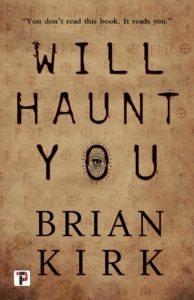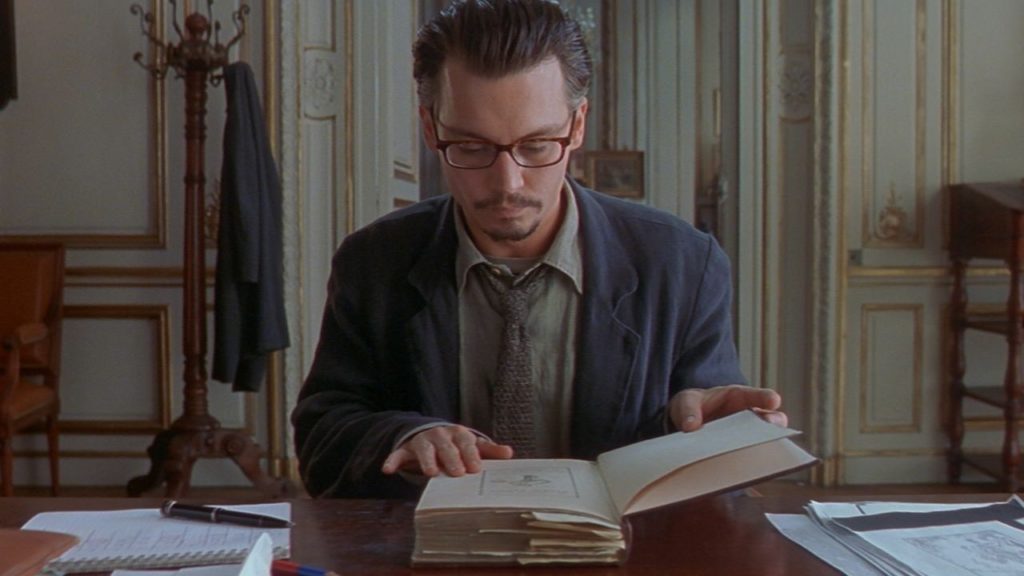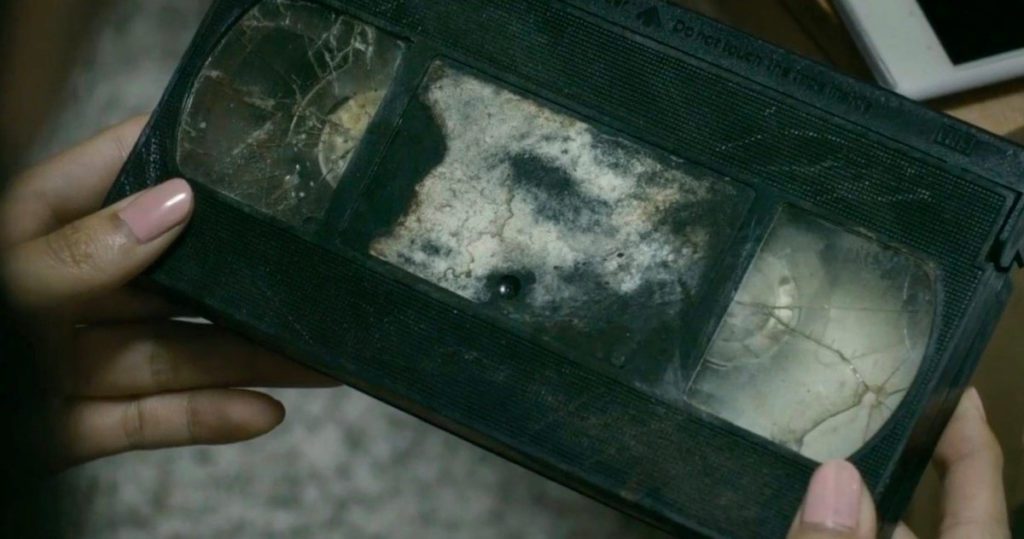Primeval, and often arcane, we have always been fascinated with forbidden knowledge. Never content to leave well enough alone, humans have a particularly nasty habit of sticking their noses where they don’t belong, especially when it comes to acquiring information they’re not supposed to have. Biblical in nature, the forbidden is desirable … and usually not at all what we expected. This particular trope is a staple of horror, showing up in the earliest stories, and is one of the facets of an entire sub-genre of speculative fiction.
Officially called ‘These Are The Things Man Was Not Meant to Know’ over at TV Tropes, the forbidden knowledge concept can be found through all media of horror fiction. Considered a Super Trope, it gives way to numerous other more specific tropes like Artifacts of Doom, Black Speech, Eldritch Abomination, Poke in the Third Eye, and Tome of Eldritch Lore among others. The acquisition of such knowledge typically drives those who possess it mad, or is much different than what they expected, sometimes is completely worthless, or is something we were supposed to know to begin with. It’s not the knowledge itself that is usually the issue, but how characters are affected by gaining it. Usually we never discover exactly what this particular forbidden knowledge is—sometimes not knowing is more mysterious, much like a sinister MacGuffin.
Perhaps the best user of forbidden knowledge in horror and weird fiction is H. P. Lovecraft. The Necronomicon, written by Abdul Alhazred, first mentioned in ‘The Hound,’ is the epitome of forbidden knowledge. Often quoted but rarely seen in his tales, it is the mention of the book rather than its actual contents that strikes fear in our imaginations. This is how it should be, because it allows the book to remain mysterious. To reveal all of the contents would be exposing the secrets, and once the forbidden becomes known, it no longer holds any power over us. Of course, that doesn’t stop inquiring minds from actually seeking out the book which doesn’t exist. But you can go to NecronomiCon in Providence in August this year, and the knowledge you’ll gain there isn’t even forbidden.
Forbidden Knowledge doesn’t always come in the form of a mysterious book. Sometimes it comes from strange architecture that can cause mental instability just from being within its presence. The monoliths in Arthur C. Clarke’s 2001: A Space Odyssey are a great example of this. In film, The Haunting (1963) uses this quite effectively. The idea isn’t so much the physicality of the strange geometry, but how it affects the characters in the story. The forbidden is often an object, such as the videotape in The Ring. Clive Barker’s Lament Configuration in The Hellbound Heart and the Hellraiser films is a form of this trope, though the knowledge gained isn’t really that unknown to the viewers, because we all know what happens when you play with fire, or in this case, when you open the box. The play in The King in Yellow by Robert W. Chambers is a great example of this, especially considering that the original copy is not required. A personal favorite of the forbidden is the trope ‘You Cannot Grasp the True Form’. In film, this is best described as trying to envision the original form of John Carpenter’s The Thing. The ultimate version of this trope is when humans encounter the true form of God, or angels, against whom even The Bible provides a simple warning, “Do not be afraid.” Often these characters are depicted as humans because that is what are minds are most comfortable with seeing.
And then there’s the Brown Note. A perfect example of this (in more ways than one) is John Carpenter’s Masters of Horror short Cigarette Burns. Here we find collectors hunting down a film that drives people mad just from watching it and captured angels, all mixed together in that glorious way Carpenter has with this strange subject matter. Many of the works of Stephen King use the Brown Note (a forbidden stimulus) in multiple ways, often in a most literal sense, as in Cell as those changed by the signal forget their own bodily functions. One could say that Mark Z. Danielewski’s House of Leaves, the actual physical book, is a Brown Note. That particular book is loaded with many versions of forbidden knowledge working in tandem on multiple levels.
This particular trope is one many complain about, especially when it falls back on well-known territory, such as the Necronomicon. And yeah, maybe they’re right … it’s getting old. The book has been played straight, played for comedic effect, subverted and averted as a trope for so long across all forms of media that mere mentions of it usually induce loud groans. Seeing it used in a fresh manner would be a welcome sight, but we’re probably at the stage when it wouldn’t be good to hold our breath. Despite all the belly-aching, forbidden knowledge used in any of its sub tropes is usually the springboard needed to get the creepy action moving in many horror stories, so when writers and creators use it in an original and clever manner, it always delivers the goods. As a trope, it’s not going away anytime soon.
There’s one particular book, adapted into a fairly decent film, that personally reigns supreme in the Tome of Eldritch Lore trope category. The Club Dumas by Arturo Pérez-Reverte (adapted by Roman Polanksi as The Ninth Gate) deals with slimy book dealers caught in a web of obsession and deceit for one book, De Umbrarum Regni Novem Portis (Of the Nine Gates of the Kingdom of Shadows) by Aristide Torchia. While the film only scratches the surface of the obsession with this book, the details are in the novel. There are three known copies of the book our book expert, Lucas Corso, seeks. The rest were burned with the author. The reason for this is because the book is supposed to be an adaptation of book called Delomelanicon, co-written by the Devil.
 Corso is tasked with discovering which of the remaining three copies are genuine, and it is here that we dive deep into the rabbit hole. Corso also has a side-job, authenticating a chapter of ‘The Anjou Wine’, part of The Three Musketeers by Alexander Dumas. The author does an excellent job of slowly connecting these two manuscripts together, as well as shedding some light on the occult activities of Dumas. And he does this with a very original Tome of Eldritch Lore, standing far away from the trappings of Lovecraft while casually relying on our desire for the forbidden to guide us on the journey. Rich in detail, this slow-burn of a novel packs an intellectual punch and certainly fits the definition of the forbidden.
Corso is tasked with discovering which of the remaining three copies are genuine, and it is here that we dive deep into the rabbit hole. Corso also has a side-job, authenticating a chapter of ‘The Anjou Wine’, part of The Three Musketeers by Alexander Dumas. The author does an excellent job of slowly connecting these two manuscripts together, as well as shedding some light on the occult activities of Dumas. And he does this with a very original Tome of Eldritch Lore, standing far away from the trappings of Lovecraft while casually relying on our desire for the forbidden to guide us on the journey. Rich in detail, this slow-burn of a novel packs an intellectual punch and certainly fits the definition of the forbidden.
A recent example of the Tome of Eldritch Lore trope is Will Haunt You by Brian Kirk. He starts the book by telling you not to read the book, that something bad will happen to you if you do, which is a great way to get you involved in the story. Without spoiling anything, what follows is a nightmarish dive into the surreal. Kirk used an excellent concept for the promotion of the book, that it was based on something that could have happened, and actually used that particular forbidden book, ominously named Obsideo, for this book blog tour, adding to the lore of the story.
We crave knowledge, especially that which is forbidden. It is our nature, our desire, and creators know this, so exploiting it comes easy. When used in inventive and sometimes original ways, the lure of the forbidden is often more than we can handle, even if we know that in the end, what we desire will lead to more trouble than it’s worth.
BOB PASTORELLA











